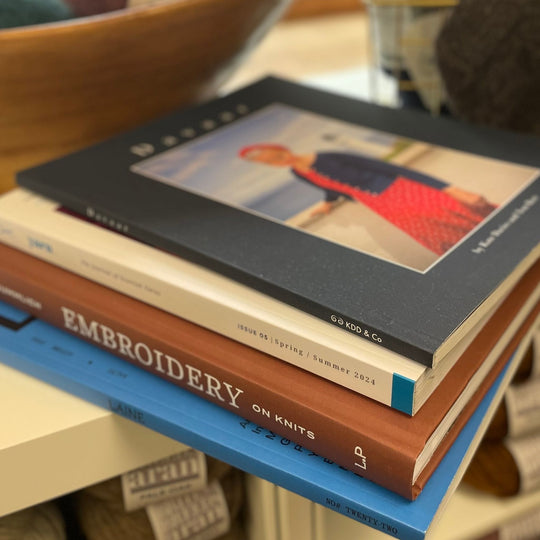Sock Yarns: Non-superwash & Low/No Nylon
As a lover of woolly wool, I am always on the lookout for more woolly options to knit! One fun area to explore is the types and varieties of yarns available for knitting socks. Many sock yarns are made with superwash merino and nylon (while I’ll discuss in my next post!) but there are many other options too. In this post, I’ll discuss the pros and cons of both non-superwash and no-nylon sock yarns, which aren’t always in the same yarn!
Non-Superwash
To talk about non-superwash, you have to define superwash first. Superwash is any chemical and/or physical process that makes wool machine-washable. Generally, it means that the little scales on the fibers that felt wool have been removed and/or a chemical coating has been applied.
A non-superwash yarn is any yarn that has not been made machine-washable. That’s the primary con for socks – you won’t throw them in the washing machine. Superwash yarns also often take dyes differently. For example, speckles of dye may be appear blended and watercolor-esque in a non-superwash yarn.
There are many pros to non-superwash yarns! Often, non-superwash yarns have a more woolly feel because they still have their little scales and have not been chemically coated. Stitches tend to mesh together more and form a more cohesive fabric. Because the wool is left in a more natural state, many people also find them to have more of wool’s natural anti-microbial (anti-stink!) properties, making frequent washing less necessary. I have also find them more breathable and comfortable to wear for the same reasons. There are also environmental considerations – non-superwash yarns have not been subjected to chemical processes so they are often more environmentally-friendly.
Tukuwool Sock is an example of a non-superwash sock yarn with nylon.
No-Nylon or Low-Nylon
While superwash and nylon often come together in a yarn, they are different considerations when selecting your yarn. Nylon is a durable man-made filament that is spun with wool (or other fibers) as a percentage of the total yarn weight. For example, the shorthand 75/25 generally means the yarn is 75% wool and 25% nylon. Many sock yarns have between 10% and 35% nylon.
A no-nylon sock yarn is, as it sounds, a yarn without nylon! Some are 100% wool, while others add silk or plant-based fibers like bamboo, Tencel (which is eucalyptus-derived), or mohair to add durability. Often, no-nylon sock yarns are twisted more tightly and/or have more plies to add durability to the yarn itself. The con is primarily durability. While no-nylon sock yarns try hard to be more durable, natural fibers will never be as durable as plastic. You can also improve durability by knitting at a very tight gauge – even up to 36 stitches to 4 inches!
Why choose a no-nylon sock? Some people choose no-nylon yarns for environmental reasons because nylon is a plastic. Others just like the feel of no-nylon yarns better. Some choose no-nylon for historical accuracy – nylon was only invented in the 1930s and yarn has been used for thousands of years!

Rauma Gammelserie and Garthenor Snowdonia are two examples of non-superwash, no-nylon sock yarns. Pictured here are Kia Socks pattern by Dawn Henderson knit in Garthenor Snowdonia in the Bala colorway.

Kelsey Peterson is a knitter, eager student of yarn construction and sheep breeds, and employee of TWT. She is on Instagram as @kcrp.making and on Ravelry as yellowpaperfish.





























